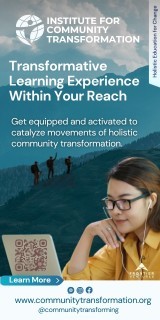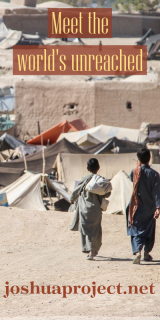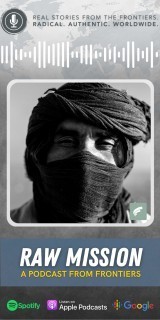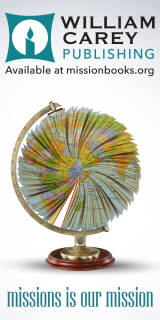Letters to the Editor

Dear Editor,
[Your] November-December 2005 issue had extensive coverage that gives the impression that there is still a huge gulf between agencies that send Western missionaries and Western agencies whose prime objective is assisting indigenous missions. However, I believe that the extent of partnership [among] these groups and indigenous ministries in developing nations is greater and healthier than what you have stated.
I have served for many years on the steering committee of the Coalition on the Support of Indigenous Ministries (COSIM), and have worked with Partners International for 19 years. More than 93 agencies have attended the COSIM annual conferences, including Western missionary sending agencies and American churches. Last year 50% were from sending agencies and churches. They’re there because they feel welcome. Partnership these days includes everyone.
Sending agencies are very good at what they do – selecting and training Americans, getting them from here to there, helping them over there. Many churches are also good at sending people. These groups look to the COSIM type of agencies for something else – decades of experience in assisting indigenous missions. We’re not the only ones who have something to say about this subject, but we have learned a lot. Our seminar at the last EFMA/IFMA triennial in 2004, “What the Non-West Wants the West to Know About Partnership,” presented by an Indonesian, drew a packed house.
I also want to assure you that our partners are really missionaries. Even in Mission Frontiers it is sometimes said that those in this kind of ministry support local evangelists and not those making breakthroughs into unreached groups. The reality is much different. At Partners International, I looked at our 40 biggest partnerships. Not one is just working in their own group. Non-western missions today are by far doing most of the cross-cultural mission work. Our partners in China are working among 22 minority groups in addition to the majority Han people. One partner in India has provided training that has resulted in people now working among over 200 unreached groups there. We assist Indonesians working among other unreached groups in Indonesia, but they are also sending their people to unreached groups in Malaysia. We help Latin Americans in North Africa. Maybe the word “indigenous” gives the wrong impression that they are solely working in their own language. The right term is hard to find to describe this movement. No term seems to be just the right one.
Nor do I think it’s generally true that near-neighbor groups are less suited to reach others nearby due to historical animosities. Certainly those animosities are there, and are nearly insurmountable in some cases. But in the main, indigenous missions are moving ahead successfully among near neighbors. I’ve never met an indigenous mission that believed that people from a vast cultural distance were better suited to reach their neighbors than they are.
I also think it’s time to be done with articles against groups who advocate “just sending money.” Many agencies involved in this movement do much more than “just sending money.” If you take our agency as an example, our USA partners feel a close relational connection with their overseas partners. I think they gain more themselves in the partnership – our overseas partners have a lot to teach us. And each year we are adding more capacity to assist our partners in many different ways ….
-Bob Savage
Partners International
Ralph Winter’s response: We agree with Savage that sending funds and not missionaries is not always wrong, and apparently he would agree that Christian Aid Mission ought not to incessantly preach that sending missionaries is wrong.
Dear Dr. Winter,
Thank you for inviting dialogue regarding the issue of supporting “native” or “national missionaries.” Some observations:
1. Things in common: On both sides of this debate, true stories are told to highlight the best practices of one side – while highlighting the worst of the other. I contend there are innumerable examples of both best and worst practices on both sides of this issue. I also see, reflected in the literature on both sides, compassion for the lost, and passion for God’s glory among the unevangelized and unreached peoples.
Ralph Winter’s response: I fully agree. We would not have addressed the issue if one of your member agencies was not positively slandering the “other side of the issue”….
2. The E-Scale helps: One criticism of supporting nationals is that they are not really “missionaries” doing pioneer cross-cultural missionary work. Using the “E-Scale” as a grid, I would classify many nationals supported by our ministry, and ministries similar to ours, at the E-1 level (same culture). But a large number of nationals serve at the E-2 level (similar but different culture). In a few ministries, some nationals serve at the E-3 level (very different culture).
RDW: I can believe that. But cross-cultural work (E-2 and E-3) is so much more complex, whether done by nationals from a “mission field” country or the USA, that it is very misleading to give donors the impression that they are supporting cross-cultural workers when they may not be.
At Mission ONE, I strongly believe that our donors understand what they are supporting.
3. A contradiction?: You wrote, “You can’t be both a native and a missionary. The phrase, ‘native missionary’ is a contradiction in terms.” With regard to E-1 evangelism, this may be true. But in nations with multiple people groups, many Christians “native” to their country are also evangelizing across cultural boundaries at the E-2 level, or at the E-1 level where no church exists – which is why so many Christians in America readily accept the phrase “native missionary.”
RDW: Yes, but whoever gets into true E-2 or E-3 work is no longer a “native” in that situation. That’s why it is a contradiction in terms to speak of a “native missionary.”
Perhaps to a missiologist there is a contradiction; to the average lay person in America, perhaps it just makes sense. By the way, at Mission ONE (and at many COSIM agencies) we use the term “national missionary” not “native missionary,” because the word “native” has derogatory connotations and is limiting because it has more of an E-1 connotation.
4. What about barriers?: You wrote, “… If they try to reach out to a next-door neighbor group, they often face greater local prejudices and barriers . . . than would a missionary from afar.” But don’t American missionaries also face major barriers? Isn’t it true their American-ness may even raise barriers more so than for non-Western missionaries? Distance traveled by those sent is less important than having appropriate training, the character qualities of Jesus, and the Holy Spirit’s empowerment.
RDW: I merely said they “often face.” I did not say “always.” Usually, however, non-believers enmeshed in poverty are initially more willing to listen to someone who comes from a wealthy country than someone from an area with all the same problems from which they are eager to escape, especially if the latter are long-standing enemies. They simply assume people from afar may be more objective.
In the ministries we support in Africa and Asia, usually the national missionaries are, relatively speaking, wealthier, healthier, and have much more education and training. The “quality of life” contrast is clear and is often an important aspect of the communication.
5. “Chief problem”?: In your exchange with Bob Finley, he wrote: “We define a missionary as being equivalent to the biblical ‘apostle,’ one who bears witness for our Lord, including planting a church where there is no church or witness. He may or may not work cross-culturally . . .” You replied, “Here is the chief problem. You have the right to define ‘missionary’ in any way you wish. But if your definition differs from your hearers’ . . . they will be seriously misled.” You believe that Finley’s definition of “missionary” differs from his hearers. I contend most Christians hold to a definition which may not be identical to Finley’s, but overlaps with his. Advocated in many mission conferences is a paradigm of “both-and” – doing missions locally and globally, with emphasis on unreached peoples. Global Focus, a mobilization ministry serving denominations and mission agencies, promotes this paradigm; it’s embraced in thousands of churches. Maybe the “chief problem” is no problem.
RDW: I think it is wonderful for Global Focus to attract support for both kinds of work. Notice, however, that your donors may think that your global work is cross-cultural and in some cases choose it thinking it is the harder, more complex cross-cultural type of work. If it is merely “overseas local”, they may feel deceived in some cases.
At Mission ONE, in the semi-annual reports we request from our organizational partners, and in turn, from the national missionary, we ask for the names of the people group(s) to whom the national is ministering. The response may vary from several to just one or two. In any case, we forward the report to the donor. I am confident that the donor understands fairly well by the report what kind of ministry is being conducted.
6. A more glorious way?: You imply that sending a Western missionary at the E-3 level to an unreached people group is superior to a “national missionary” going at the E-2 level – while some on the “side” of the national missionary movement say it is superior to send nationals, not Westerners. To these two viewpoints, I ask: Isn’t it more reasonable, joyful, and glorious to believe that God is mightily using both? Many healthy partnerships operate in this “both-and” paradigm.
RDW: Imply? I would never say that E-3 work by a western missionary is generally “superior” to anyone going E-2. But E-3 is certainly much more difficult. No matter who is involved in E-3, it is a tough row to hoe.
In your articles, you gave no consideration to national missionaries going at the E-2 level, and pointed out possible weaknesses of supporting national missionaries in contrast to foreigners going cross-culturally. I interpreted that as an implication as stated. Thank you for clarifying your position.
7. COSIM, serving the “partnership with nationals” movement within a “both-and” paradigm: COSIM (Coalition on the Support of Indigenous Ministries) exists to promote healthy cross-cultural partnerships. The annual COSIM conference will be held June 12-14 at the Billy Graham Center in Wheaton, Illinois. The theme is “Partnerships that Transform: Here and There."
RDW: I would hope someday that partnerships might exist consisting of both COSIM and IFMA-EFMA agencies.
I agree wholeheartedly and am hopeful ….
-Werner Mischke
Steering Committee Chair, COSIM
Vice President,
Mission ONE








comments